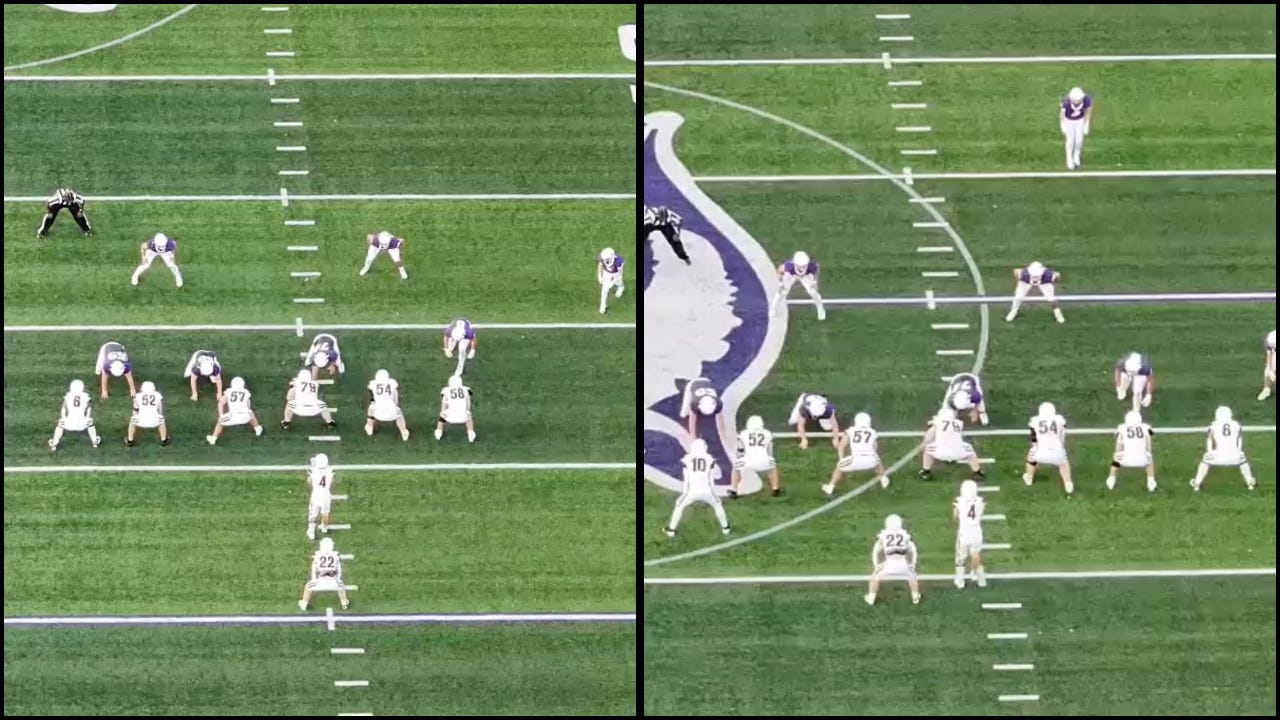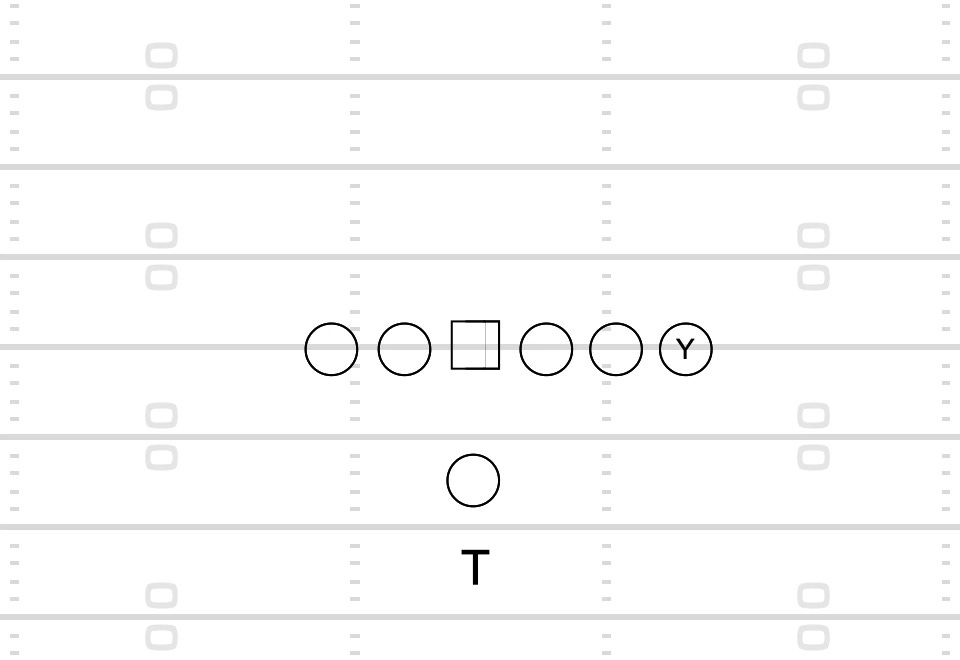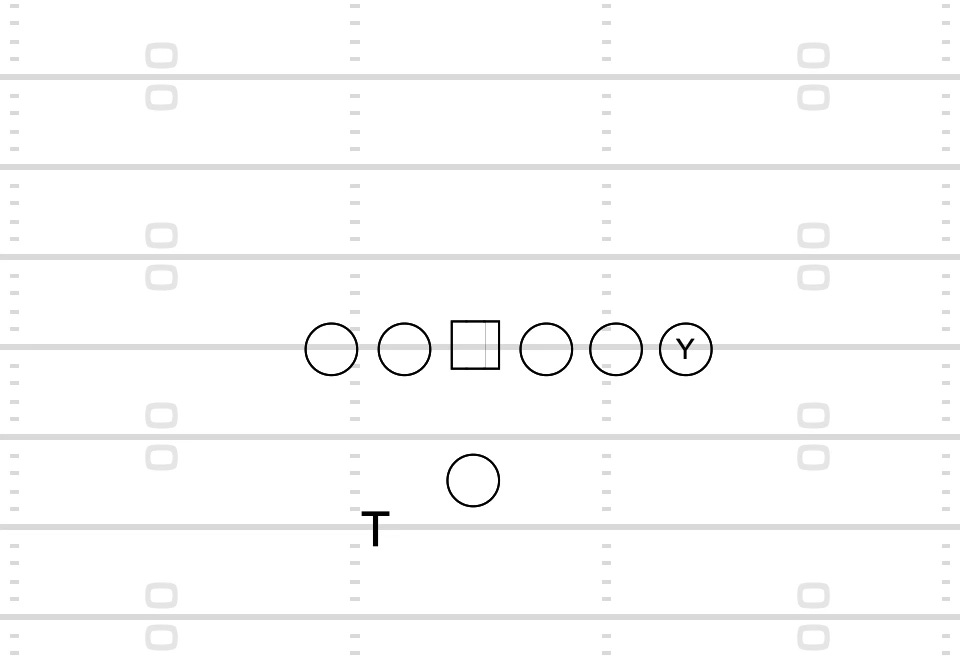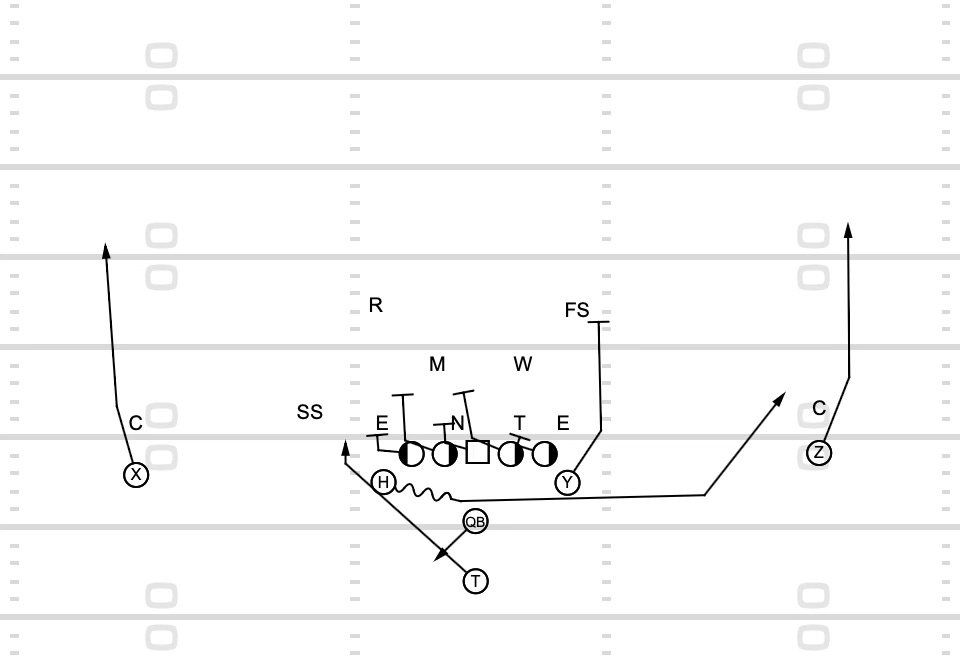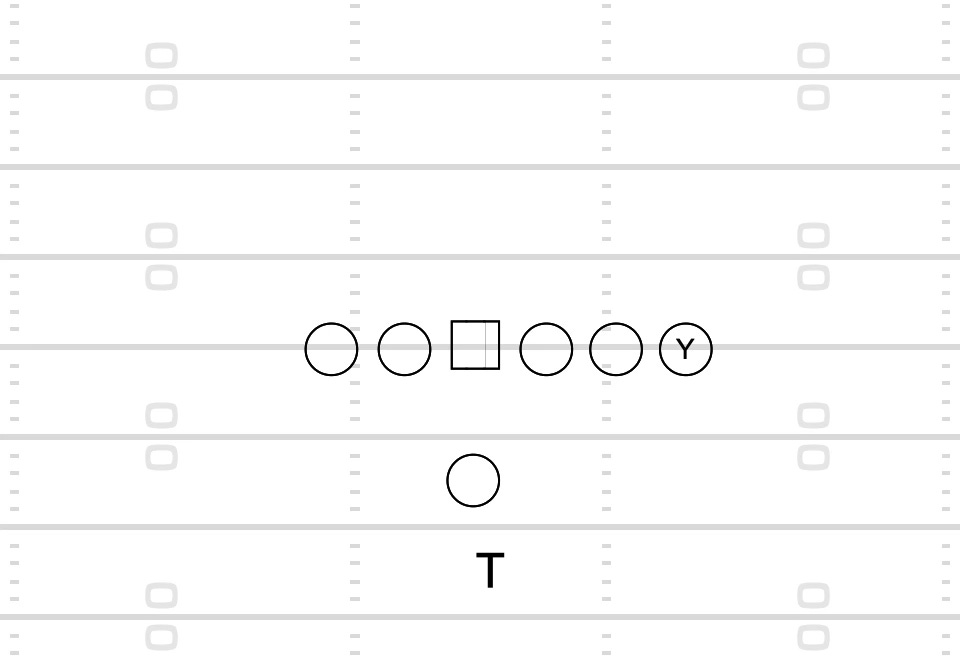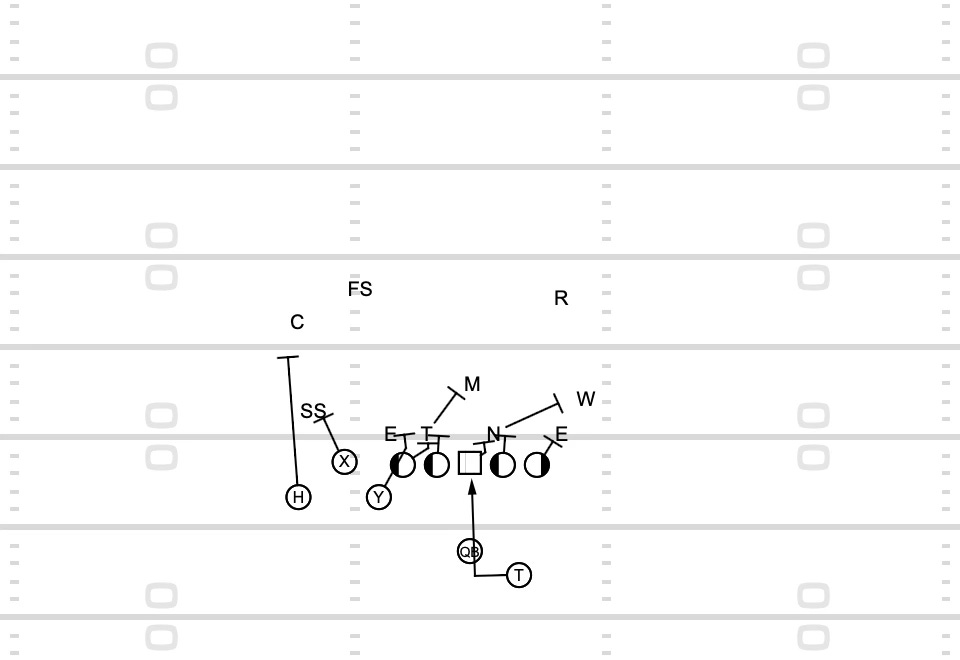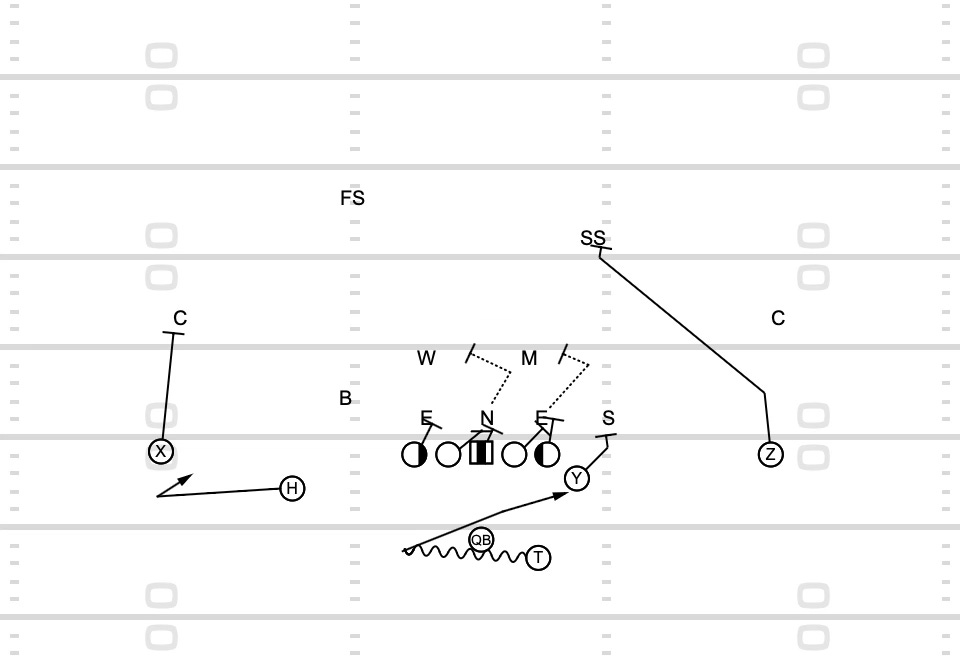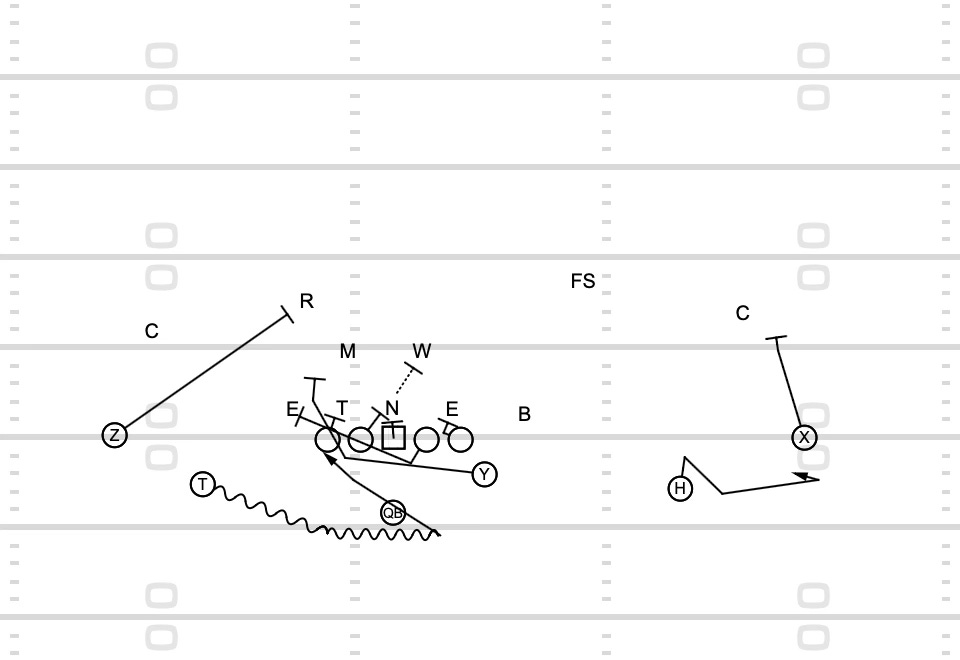Pistol vs. Shotgun: Which Backfield Set Gives You the Edge?
Breaking down the hidden advantages, limitations, and how to build your offense around both.
One of the most common questions I get from coaches building their offensive system is this:
Should I use pistol or shotgun?
It’s not just about personal preference, it’s about structure, tendencies, and how much information you're giving the defense before the snap.
Each setup has real trade-offs that impact the run game, RPOs, pass protection, and even your ability to disguise plays.
In this breakdown, I’ll walk you through the pros and cons of each, and more importantly, how to work around their limitations so you can build a system that keeps defenses guessing.
The Question Every OC Must Answer
When you’re building your offense one of the first decisions is where you put the running back. (Assuming you’ve already decided to not go under center. That’s a completely different discussion.)
Pistol or shotgun?
It sounds simple. It’s not.
This choice impacts more than just run angles. It affects RPOs, play-action, pass protection, and the defense’s ability to read you.
The truth is, most coaches pick based on what they’ve seen or what they’re comfortable with. Maybe they saw a college team running zone out of shotgun and liked how it looked. Maybe they installed pistol one year because it “felt more balanced.”
It’s important to understand what each structure gives you and what limitations each have.
This doesn’t mean you need to choose one forever. Plenty of systems use both. But you do need to be intentional. You need to know what you’re giving up and what you’re gaining every time the back lines up.
The rest of this article breaks down the pros and cons of pistol vs. shotgun. But more importantly, it shows you how to work around the weaknesses of each so you can build a system that plays to your strengths and keeps defenses on their heels.
Pistol Formation
In a pistol formation, the quarterback’s heels are typically set at 5 yards, with the running back aligned directly behind him at 7 yards. It combines elements of both shotgun and under center, giving the quarterback depth while keeping the back on a straight downhill track.
Pistol Pros
No Pre-Snap Tendency
Because the back is directly behind the quarterback, defenses can’t key run direction based on alignment. You’re not tipping zone right or zone left like you might in sidecar. This allows you to attack either side of the formation without giving it away. It also allows for easier checks or audibles without changing anyone’s alignments.
Quicker Downhill Runs
With shoulders already squared to the line of scrimmage, the back doesn’t need to plant and redirect to get vertical. His path is more natural and downhill, which is ideal for gap schemes, inside zone, and even wide zone. The footwork feels like under center but gives you the spacing of shotgun.
Hides the Back and His Path
From the defense’s perspective, especially linebackers, the running back’s initial footwork is masked by the quarterback. His track is hidden longer, which means the second level has to hesitate before triggering downhill. That split-second of delay can be the difference between a 4-yard gain and a 40-yard run.
Seamless Transition from Under Center
If you run any under center plays (short yardage, play-action, toss), the running back’s footwork and aiming points don’t change. This continuity can simplify teaching and help backs feel more comfortable in both setups.
Pistol Cons
Limited in the Passing Game
Because the back is directly behind the quarterback, it’s harder for him to get into routes, especially quick ones. Whether you’re trying to free release on a swing, angle, or arrow route, the RB has further to go, and can make the timing more difficult.
Slower to Insert in Pass Protection
If the back is responsible for interior protection (A-gap), he might be too late. He has to go around the quarterback’s body to get there, which adds precious time, and against blitz-heavy teams, that could be the difference between a clean pocket and a sack.
No True Mesh on Wide Zone or Pin and Pull RPOs
You lose the ability to ride the mesh and read defenders post-snap on outside runs. The quarterback has to turn his shoulders to deliver the ball, which eliminates second- and third-level RPOs.
You can still tag key screens or pre-snap reads or use a downhill mesh on Inside Zone, power, or counter to attack 2nd level defender. But Wide Zone, Pin and Pull, or Buck Sweep become straight handoffs.
No Lead Block on Jet or QB Runs
Because the back is directly behind the quarterback, he can’t become a lead blocker for jet sweeps or QB-designed runs like power read or counter bash. You lose that added element of misdirection and physicality that an offset back can provide in modern spread schemes.
Shotgun Side Car Alignment
In shotgun with a sidecar alignment, the quarterback’s heels are typically set at 5 yards, with the running back aligned beside him, either to the left or right.
The exact alignment (depth and width) varies by scheme and coaching preference, which we won’t get into here. For this article, we’re focused on the core structure and how it impacts your offense.
This is the most common backfield setup in modern spread systems. But just like pistol, it comes with trade-offs that need to be considered when designing your offense.
Side Car Pros
Unlocks RPOs on outside runs
Shotgun sidecar is the foundation of the modern RPO game. It allows for true mesh reads, where the quarterback can ride the handoff and make real-time decisions based on the movement of second- or third-level defenders. This creates horizontal and vertical stress for the defense, and it opens up simple answers against loaded boxes or soft perimeter coverage.
Cleaner Pass Protection
With the back offset, he can more easily identify and attack pressure without being blocked by the quarterback’s body. Whether inserting into the A-gap, scanning outside, or bluffing into a delayed release, the path is clearer and the timing is faster.
Immediate Route Access
Because the running back isn’t trapped behind the quarterback, he can release immediately into swings, arrows, wheels, or checkdowns. This is especially valuable if your back is one of your better athletes and you want to get him into space on screens or option routes.
Can Lead Block on Jet or QB Runs
One of the underrated benefits of sidecar alignment is the ability to use the back as a true lead blocker. On jet sweeps, QB power reads, or any designed quarterback run, the back can kick out or insert cleanly into the play. This adds another layer of versatility to your run game.
Side Car Cons
Creates Tendency in the Run Game
Defenses know that most zone runs from sidecar tend to go opposite the back’s alignment. This means they can shift their fronts, trigger linebackers, and play with leverage before the ball is even snapped. You can work around it, but the tendency exists, and good defenses will plan accordingly.
Tougher Path for Outside runs.
Because the back starts with his shoulders perpendicular to the line of scrimmage, he has to open and turn to get on a wide track. This creates a longer path to the aiming point and makes the cutback timing more difficult. It takes more skill and reps for the back to stay patient and find the gap, especially when compared to a downhill pistol track.
Slower Vertical Entry
Even on inside zone, power, or trap the back may take an extra lateral step before getting vertical. This can make the timing feel off for some schemes, particularly if your system is built on quick-hitting runs where every fraction of a second matters.
Working Around the Weaknesses
Adjusting the Pistol
No system is perfect. But good coaches don’t complain about the limitations, they design around them. The pistol formation gives you balance and downhill runs, but it can feel restrictive in the pass game, and some modern spread elements. Fortunately, there are simple solutions to most of these problems.
Here’s how you can make pistol work in a complete offensive system.
Problem: The Back Can’t Release Quickly into Routes
Solution: Motion Him Out
If your back is a true receiving threat, motion him out of the pistol to an empty set or swing alignment. This creates matchup problems for defenses and gives you clarity on coverage (man vs. zone). You can even fake the motion to create misdirection and open up run lanes inside.
Pass Pro Timing is Delayed on Interior Pressure
Solution: Bounce Motion the Back Late
A quick “bounce” motion from pistol to offset can solve pass protection issues without tipping the play too early. The QB stays in pistol depth, the back shifts to a sidecar look, and you gain access to quicker insert angles, without needing to start in shotgun.
This works especially well on known passing downs or 3rd-and-medium situations where you expect pressure.
Problem: Can’t Lead Block on Jet Sweeps
Solution: Run Fly Sweeps to the Backside of Runs
You don’t need the back to lead block on jet or fly sweep to make it effective. Instead, use the back as a decoy going the opposite direction. Run your fly sweep one way and fake your base run the other.
For example: Fly Sweep Right + Fake Wide Zone Left.
The backside run fake holds linebackers and safeties who have to respect the possibility of a cutback or explosive zone play. This forces the defense into a bind:
If they chase the sweep, you’ve got the zone run open.
If they sit on the run, your fly sweep hits the edge untouched.
This creates conflict without complexity, and you never needed the back to lead block.
A Subtle Solution — Stay Behind the QB, Shift Slightly
One often-overlooked tactic is slightly offsetting the back within pistol depth, just enough to help timing or pass protection, without giving the defense a clear read.
Instead of lining the running back directly behind the quarterback at 7 yards, you keep him at the same depth but shift him. Start with the running back’s inside foot on the QBs outside foot. Some on the field might pick up, but it will be harder for the coaches on the sideline and in the press box to notice.
Adjusting Side Car
The sidecar alignment is the engine of modern spread football. But it’s not without flaws. The biggest challenge? You start tipping your hand in the run game.
Luckily, there are simple, intentional ways to erase these tendencies and regain the unpredictability you need to create conflict.
Problem: Run Direction Tendency Based on Back Alignment
Solution: Call Same-Side Run Concepts
The easiest fix? Run to the same side as the back. While many shotgun teams automatically run away from the back, flipping that tendency forces defenses to respect both directions.
You can coach this with tempo steps, open crossover footwork, or pre-snap alignment tweaks depending on your system.
Same-side counter, Duo, and Power give you the benefit of unpredictability while still attacking your preferred angles. Same-side Pin and Pull toss can exploit the defense on the perimeter.
Defenses Adjust Pre-Snap Based on Back Location
Solution: Late Shuffle or Bounce Motion
You can erase pre-snap tips by moving the back late, either with a quick shuffle from one side to the other or by starting in pistol and bouncing him offset just before the snap. These shifts force defenses to stay static longer and delay their to set their front.
Start in Empty, Then Motion Into the Backfield
One of the simplest ways to disrupt defensive tendencies is to start in empty.
Most defenses have automatic checks when they see an empty formation. By aligning in empty first, you can force their hand, watch how they react, and then motion the back into the backfield after the check is made.
This gives you two major advantages:
It neutralizes the defense’s ability to pre-load the box or rotate coverage based on back alignment.
It lets you get into any sidecar look you want on your timing.
Which One Is Better? (Spoiler: That’s the Wrong Question)
Coaches want a straight answer. Pistol or shotgun? Just tell me which is better.
But here’s the truth: neither one is better across the board. Each backfield alignment gives you different tools and introduces different problems.
What actually matters is how well your system accounts for those trade-offs.
The mistake is choosing one blindly without considering how it fits your play-calling rhythm, your install, your players.
What separates good coordinators from great ones isn’t the alignment they choose, it’s their ability to build a system around it.
To teach it. Rep it. And evolve it when needed.
You don’t have to pick one forever.
So instead of asking Which one is better?, ask this:
Which one fits our personnel and system the best?
Can You Use Both?
Short answer? Yes.
But here’s the real question: Can you use both effectively? That depends.
It’s not a scheme issue, it’s a practice structure issue.
Running both pistol and shotgun looks easy on paper, but it doubles your footwork teaching, forces backs to master different tracks, and demands more reps to get timing right. That time has to come from somewhere.
So ask yourself:
Do you have the practice time to commit to both?
Are you willing to cut down on the number of concepts so you can rep the footwork and timing for both alignments?
You can do anything you want. But everything has a cost.
One potential compromise is to assign each alignment to specific play types. Maybe you run Wide Zone, Counter, and Boot from pistol, but go to side car for Inside Zone, screens, and passes.
If you protect your tendencies well with motion, formation variation, or game planning, that can work.
But you have to be intentional.
Final Thoughts: Simplicity, Structure, and Intentionality
Backfield alignment is one of those subtle choices that shapes your offense whether you realize it or not.
There’s no one-size-fits-all answer.
The worst place to be is in the middle, bouncing between alignments, unsure of your identity, trying to do too much without the practice time to back it up.
That’s how systems break down.
So whether you commit to pistol, shotgun, or a structured blend of both, make sure it’s a decision built around:
Your players
Your practice time
And your core offensive identity
Simple systems win because they give your kids confidence. Confidence leads to execution. And execution leads to points.
The formation doesn’t win games. The system and how well you teach it does.



